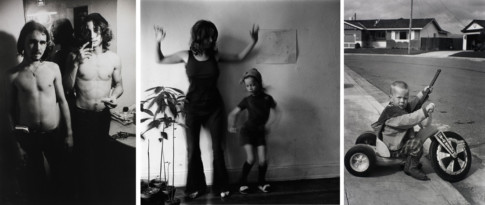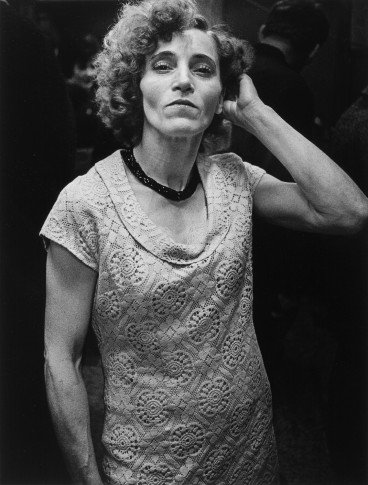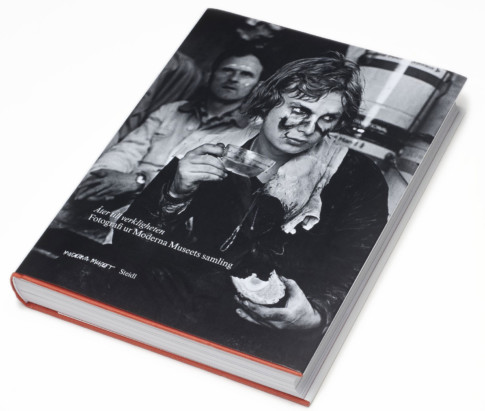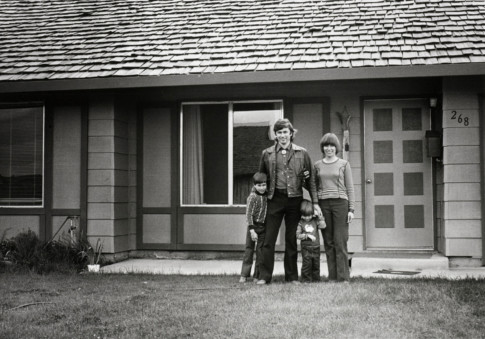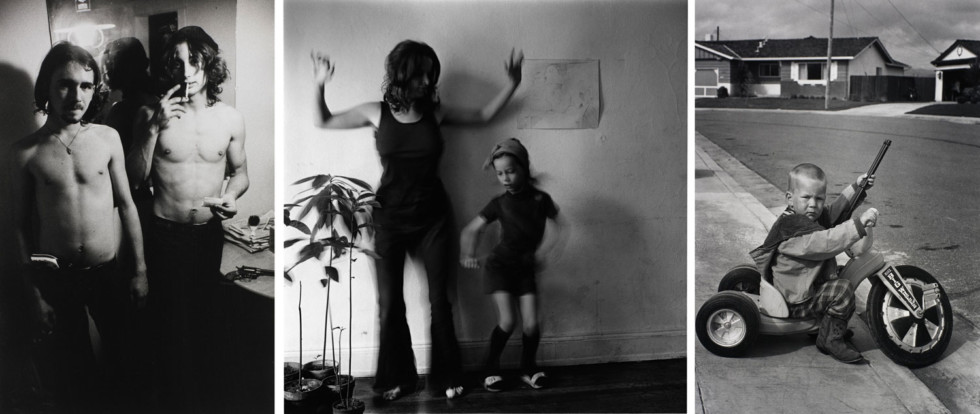
Larry Clark, Armed Robbers, Oklahoma City, 1976, Courtesy of the artist and Luhring Augustine, New York. Melissa Shook, May 30, 1973 © Melissa Shook. Bill Owens, From the series Suburbia, 1968–72 © Bill Owens
Photographers
Hans Alenius
Born 1937, Sweden
Lives and works in Fagersta
Hans Alenius, born in Vilhelmina, is one of Sweden’s most well-known documentary photographers.
He has participated in some 60 exhibitions and a dozen books, both in Sweden and abroad, including the exhibitions Landsväg (Main Road, 1976) and Fyra svenska fotografer; Hans Alenius, Yngve Baum, Jens S Jensen, Ola Terje (Four Swedish Photographers, 1975) at Fotografiska Museet in Moderna Museet. Moreover, his photographs have been published in numerous magazines and newspapers. In recent years, Alenius has been acknowledged for the project Nattlandskap (Nocturnal Landscapes, 2004) – a work that took ten years to complete and resulted in a photo book and an exhibition that toured Swedish art institutions in 2004-06. Alenius has a background as a biology teacher and finds inspiration in nature’s creation.
Jim Alinder
Born 1941, USA
Lives and works in Gualala, CA, USA
Manuel Alvarez-Bravo
1902–2002, Mexico
Diane Arbus
1923–1971, USA
In her relatively short career, Diane Arbus used the camera in her encounters with people, creating a profoundly personal style of portrait.
Arbus was born in New York and grew up in a Jewish family on Manhattan. For a few years in the 1950s, she and her husband Allan Arbus worked together as fashion and advertising photographers, eventually earning assignments from Vogue and Glamour.
Thanks to two Guggenheim grants, in 1963 and 1966, she was able to undertake two independent projects and travelled around the USA for two summers, taking pictures on the theme of American rituals. It is on these journeys some of her most famous portraits of people in more or less unusual situations and environments were taken. Her life ended abruptly with suicide in 1971. The following year, The Museum of Modern Art in New York had a posthumous exhibition of her work, making her one of the most well-known postwar photographers.
Read more: Biography Diane Arbus
Lewis Baltz
Born 1945, USA
Lives and works in Paris, France
Yngve Baum
Born 1945, Sweden
Lives and works in Gothenburg, Sweden
Yngve Baum was born in Bjärnum. Baum is a socially committed photographer who is famous for his photographs that portray cultural change and reveal social injustices – especially in the workplace.
This is evident, for instance, in the photo books Människor vid hav – Lofoten (People by the Sea – Lofoten, 1966), Ujamaa – Människor i Tanzania (Ujamaa – People in Tanzania, 1970) and in the exhibition Varvsarbetare (Shipyard Workers) at Fotografiska museet in Moderna museet in 1974. Since Baum devotes himself to humanistic documentary photography, it has always been essential to him to live near the people and environments he portrays. In this way, he feels he gains a better understanding of them and gives them the potential to speak for themselves.
Bill Brandt
1904–1983, United Kingdom
Bill Brandt originally worked as an assistant to Man Ray in Paris early on in his career. Presumably, the surrealist undertones that characterise many of Brandt’s photographs stem from this period with Man Ray.
In the early 1930s, Brandt moved to London, where he portrayed the British class society and the bombing of London during the Second World War. After the war, Brandt devoted himself to landscape photography and nude studies, in which he developed his skill in using shadow. He has also photographed for several magazines, including Liliput, Harper’s Bazaar and Picture Post. Brandt had solo exhibitions at the Museum of Modern Art 1948 and 1969.
Brassaï
1899–1984, Hungary
Hungarian-born Guyla Halasz, better known under the pseudonym Brassaï, studied art in Budapest and Berlin, before moving to Paris in 1924, where he worked as a journalist and painter before turning to photography in the early 1930s.
By 1933, he had produced the ground-breaking book Paris de nuit, with text by Paul Morand. Although he collaborated with surrealist artists Brassaï retained a detachment, since he could not entirely accept their ideology. He also produced several portraits of artists, including the Picasso portraits that are among his most famous works. These were compiled in the book Conversations avec Picasso (1961) for which Brassaï also photographed and interpreted several of Picasso’s sculptures. On his walks through the city, he discovered urban graffiti, which was à la mode, inspiring artists such as Jean Dubuffet and Henri Micheaux.
Harry Callahan
1912–1999, USA
Henri Cartier-Bresson
1908–2004, France
Henri Cartier-Bresson was initially interested in painting and belonged to the surrealist artist circles. During his travels to the Ivory Coast in 1931, he began taking photographs.
He was conscripted when the Second World War broke out, but after only a few months he was captured by the Germans. The war years influenced his approach to his work and he became a conscious photo journalist and the emphasis of his work was on mankind, not art. In 1947, he co-founded the legendary photo agency Magnum Photo. He then spent more than 20 years travelling around the world with his camera, producing reportages that have become seminal. From the mid-1970s, he devoted himself entirely to painting. In 1952 was Cartier-Bresson’s famous book Images à la sauvette (The Decisive Moment) published. This work became a bible for generations of photographers. In it, Cartier-Bresson presents his methods and his thoughts on photography. Henri Cartier-Bresson has come to epitomise the independent photographer who, with his small-format camera, succeeds in capturing the decisive moment.
Larry Clark
Born 1943, USA
Lives and works in New York and Los Angeles, USA
Larry Clark was born in 1943 in Tulsa, Oklahoma and lives and works in New York and Los Angeles. He studied photography at the Layton School of Art, Milwaukee before working as an assistant in New York.
After serving in Vietnam, Clark returned to Tulsa, where he earned his living as a freelance photographer between 1963 and 1971 and was gradually drawn into the escalating drug abuse and criminal lifestyle of his friends. Always with his small-format camera at the ready, he documented the lives of his friends and himself in their hometown.
Often balancing precariously between being repulsive and beautiful, Clark’s controversial photos pose questions about teenage life, sexuality, drugs and violence. The pictures, which were published in his debut book, Tulsa (1971), made Clark famous, not to say infamous. Since then, he has continued consistently to portray social issues relating to initiation into adulthood, in books such as Teenage Lust (1983), The Perfect Childhood (1992) and the acclaimed feature film Kids (1995).
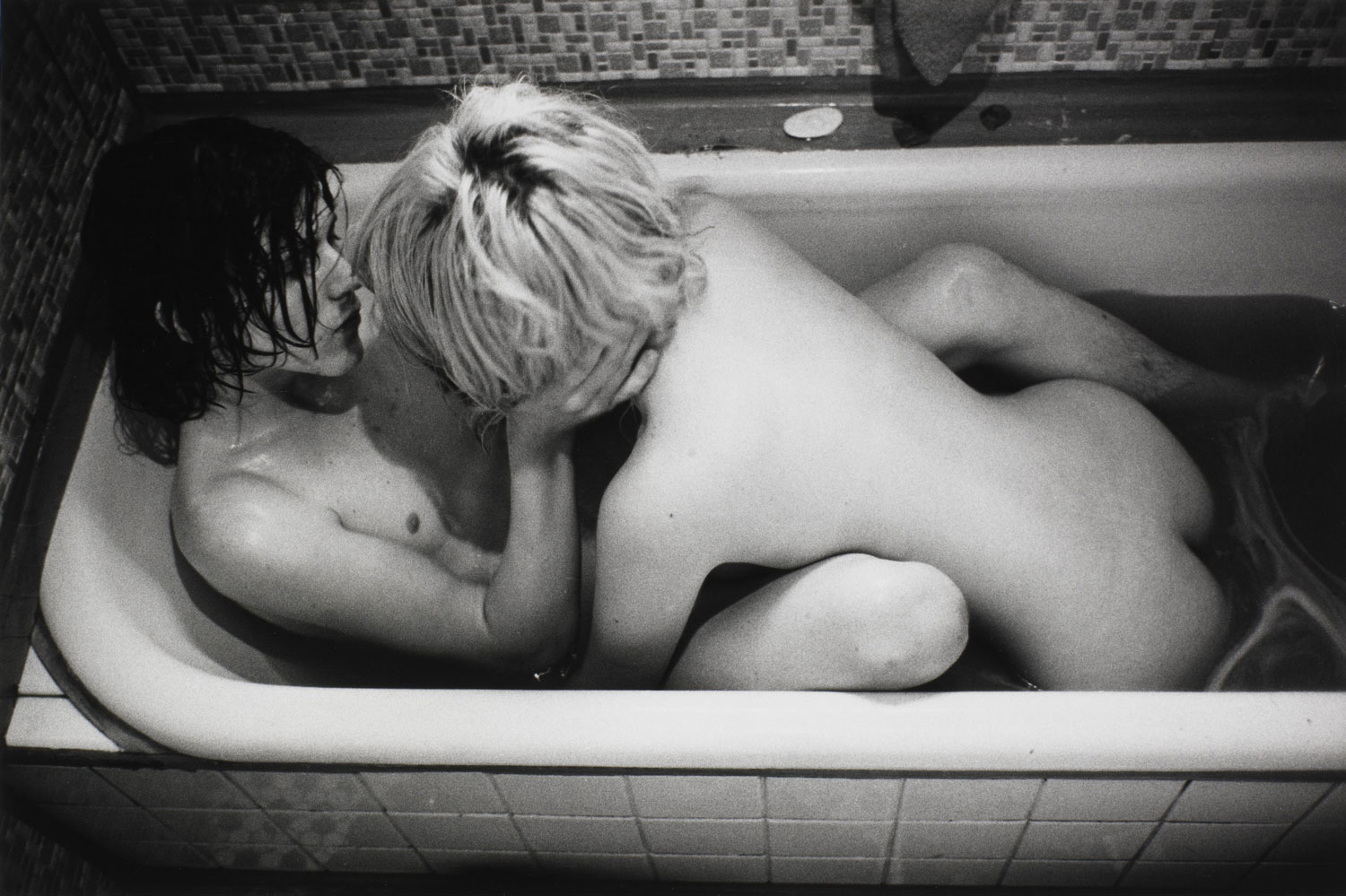 Larry Clark, Speedy and Barb. Ur serien “Teenage Lust”, 1968/1986 © Courtesy of the artist and Luhring Augustine, New York
Larry Clark, Speedy and Barb. Ur serien “Teenage Lust”, 1968/1986 © Courtesy of the artist and Luhring Augustine, New York
Ernest Cole
1940–1990, South Africa
Judy Dater
Born 1941, USA
Lives and works in Palo Alto, CA, USA
Judy Dater was born in Hollywood, Los Angeles. After studying art at the University of California, she moved to San Francisco.
In the 1970s, Dater collaborated with Jack Wellpot – and in 1975, they co-published the book Women and Other Visions. Dater has been strongly inspired by the work of Imogen Cunningham, and published Imogen Cunningham: A Portrait in 1979, with photos by Cunningham and Dater, along with interviews with Cunningham and her contemporaries. Judy Dater is fascinated, above all, by faces and bodies and has thus devoted herself mainly to portrait photography. In recent years, Dater has been working in Italy, photographing Roman sculptures.
Dawid
Born 1949, Sweden
Lives and works in Stockholm, Sweden
Björn Dawidsson was born in Örebro. Dawidsson, with the artist name Dawid, is well-known for his experiments in the photographic medium to erase the boundary between photography and painting.
The creative process is vital to his images and his artistic work. Dawid is profusely represented in Swedish institutions and collections. In connection with the exhibition Mot fotografiet (1989) at the Thielska Gallery in Stockholm, Ulf Linde published a now-famous catalogue in which he claims that Dawid raises photography to the level of painting. In the 2000s, Dawid has had solo exhibitions at Centre Culturel Suédois in Paris (2002), Millesgården (2005) and Liljevalchs Konsthall (2008), and has also participated in numerous group exhibitions. Dawid is also a successful fashion and commercial photographer.
Carl Johan De Geer
Born 1938, Sweden
Lives and works in Stockholm, Sweden
Carl Johan De Geer, born in Canada, has a career as a photographer, film-maker, musician, writer, visual artist, stage designer and textile designer.
He studied at the University College of Arts Crafts and Design, Konstfack, in Stockholm in 1959–63 and was later part of the circle around the magazine Puss. From the mid-1960s, he began working as a photographer and came to have many fashion assignments. He also taught for some time at the legendary Fotoskolan, led by Christer Strömholm. In 1979, Moderna Museet featured the exhibition Med kameran som tröst (With the Camera as Comfort), in which Carl Johan De Geer showed 412 photos taken between 1958 and 1979. The following year, the pictures were published in a book, and a sequel film was published in 2004, where De Geer presents his somewhat emotional and personal relationship to cameras and photography. The camera was his way of getting close to people and understanding and interpreting his surroundings.
Lennart Durehed
Born 1950, Sweden
Lives and works in Stockholm, Sweden
Lennart Durehed was born in Gothenburg. He studied photography in Gothenburg, before working as a photo journalist.
In 1973-76, he was an assistant to the fashion photographer Irving Penn in New York. On his return to Sweden, he started a gallery, Camera Obscura, in Stockholm together with the art director Lars Hall. Durehed has participated in exhibitions at Fotografiska Museet in Moderna Museet in 1981 and 1990 and in numerous group exhibitions, including shows at Brandts Klädesfabrik in Odense, Denmark and the Walker Art Center in Minneapolis, USA. He had a solo exhibition at Kulturhuset in Stockholm in 1991 and his photographs have been published in several photo books. Durehed is currently active as a freelance photographer.
Ann Christine Eek
Born 1948, Sweden
Lives and works in Oslo, Norway
Ann Christine Eek was born in 1948 in Falun. Between 1968 and 1971, she studied under Christer Strömholm at Fotoskolan in Stockholm, where she later became a teacher.
Between 1975 and 2007, she made long trips to the former Yugoslavia and Albania, where she accompanied the Norwegian anthropologist Berit Backer to document the then isolated life in the villages and rural areas, an existence that changed radically after the war. More recently, she has photographed the Scandinavian countryside. Eek has worked as a freelance photographer and photo journalist since 1972, but has also been employed as a photographer at Norsk Folkemuseum in Oslo.
William Eggleston
Born 1939, USA
Lives and works in Memphis, USA
William Eggleston was born in Memphis, Tennessee. After studying at the Vanderbilt University, Delta State College and University of Mississippi, Eggleston moved to New York, where he became a pioneer in using colour film for art photography.
In New York he also met Diane Arbus, Garry Winogrand and Lee Friedlander – all of whom had an impact on his work. In 1976, the Museum of Modern Art in New York featured his first exhibition of colour photographs – Photographs of William Eggleston. The exhibition then went on tour throughout the USA. Eggleston is a master photographer who concentrates on the everyday; he considers no subject too trivial to be photographed.
Monika Englund
Born 1935, Sweden
Lives and works in Gothenburg, Sweden
Monica Englund, född i Sundsvall, är utbildad vid Berghs School of Communication i Stockholm. På 1970 och 80-talen arbetade hon som fotograf vid Göteborgs stadsteater. Englund är kanske mest känd i Sverige för sina tidiga fotografier från förlossningar.
Dokumentationen av födslar resulterade i hennes första separatutställning på Galleri 54 i Göteborg (1979) och i böckerna En födelse (1982) och Bilderbok om kejsarsnitt (1983). Internationellt är dock Englund mest uppmärksammad för sina bilder av växter som hon bland annat ställt ut i Mexiko, Nicaragua, Norge, Polen och USA. Monica Englund har blivit belönad med Anna Riwkin-priset.
Walker Evans
1903–1975, USA
Walker Evans was born in St Louis, Missouri. Following a year in Paris, where he intended to become a successful author, Evans moved to New York and began photographing.
In the early 1930s, he travelled to Cuba to document the rebellion against Gerardo Machado. He was subsequently active as a photographer within the American project Farm Security Administration (FSA), part of Franklin D. Roosevelt’s New Deal. Inspired by Eugène Atget, architecture and the signs and symbols of modern society, advertising pillars and shop windows became popular motifs in Evans’ photography. He also wrote for Time magazine and taught photography at Yale University School of Art in 1964–74.
Luis Faurer
1916–2001, USA
Robbert Flick
Born 1939, The Netherlands
Lives and works in Los Angeles, CA, USA
Robert Frank
Born 1924, Switzerland
Lives and works in New York, and Mabou, CA, USA
Jan Fridlund
Born 1932, Sweden
Lives and works in Stockholm, Sweden
Jan Fridlund är utbildad vid Schule für Kunst und Handwerk i Saarbrücken, Tyskland, under Otto Steinerts ledning. Han påbörjade sin professionella karriär som elev till hovfotograf Walter Olson.
Fridlund har varit verksam som pressfotograf vid Aftonbladet, arbetat som assistent åt William Klein i Paris samt assisterat Irving Penn i New York. I slutet av 1970-talet och fram till tidigt 1980-tal hade Fridlund en egen studio i Stockholm som arbetade med reklamfoto. Under 1980 började han arbeta som lärare i fotografi vid Konstfack där han sedermera blev professor. Fridlund har ett analytiskt synsätt på sitt fotograferande – han har i sitt arbete undersökt den fotografiska processen, exempelvis hur ljus skapar skuggor och reflexer samt den diskrepans som finns mellan svart och vitt.
Lee Friedlander
Born 1934, USA
Lives and works in New York, USA
Lee Friedlander studied photography at the Art Center College of Design in Pasadena, California.
In 1956, Friedlander moved to New York, where he initially earned his living as a photographer working for several magazines. He later became known mainly for his photographs of what is now known as the social landscape, a form of representation that strives to capture the image of modern society. In Friedlander’s case, this means pictures of the urban environment, such as shop windows, information signs and architectonic structures. In 2005, Friedlander received the Hasselblad Foundation’s international award for photography and the same year he was featured at the Museum of Modern Art in New York in a major retrospective exhibition of his photography.
Gretchen Garner
Born 1939, USA
Lives and works in Columbus, OH, USA
Gretchen Garner was born in Minneapolis. In 1973–75, she studied photography at the School of the Art Institute, Chicago.
After graduating, she worked for some time as a press photographer at the Chicago Daily News. Apart from photography, Garner has also been a curator, writer and teacher – teaching photography and photo history at the Michigan Grand Valley State University and the University of Connecticut. In the 1980s, Garner devoted herself strongly to outdoor photography. The countryside around Chicago inspired her to travel around the USA and Europe for a decade, producing landscape portrayals that include Denmark, Sweden and France.
Hans Gedda
Born 1942, Sweden
Lives and works in Stockholm, Sweden
Ralph Gibson
Born 1939, USA
Lives and works in New York, USA
Ralph Gibson was born in 1939 in Los Angeles, USA. He lives and works in New York.
He took up photography while in the Navy, then pursued his studies at the San Francisco Art Institute (1960-62) and was an assistant to Dorothea Lange and Robert Frank. Gibson’s photos often have a dreamy, psychological element, where the gaze plays a vital part. He is especially noteworthy for his contributions as the editor of his own publishing company, Lustrum Press, which has produced a number of seminal books on photography and was one of the first to publish works by photographers such as Robert Frank and Larry Clark.
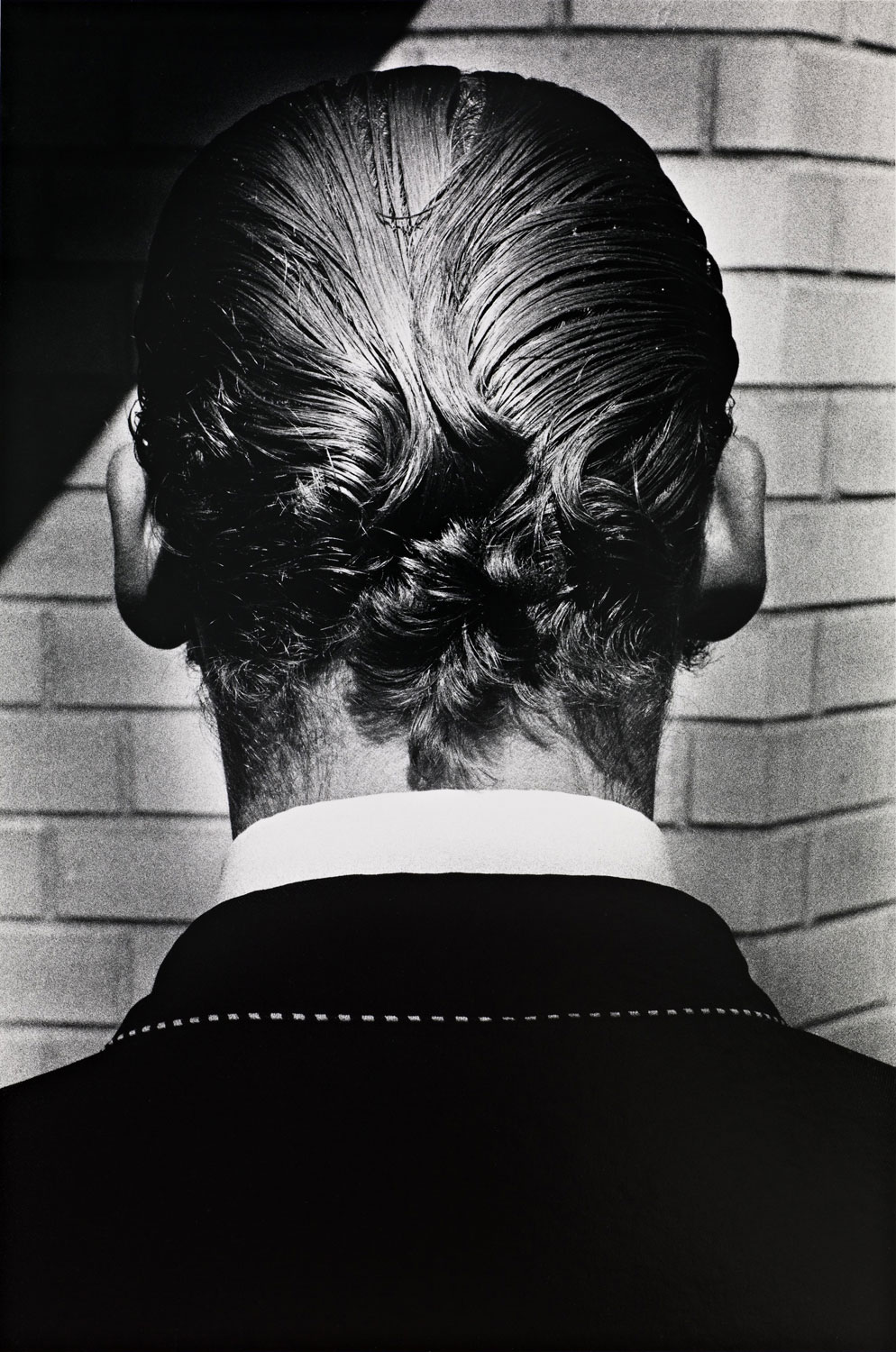 Ralph Gibson, Titel saknas, ur serien Quadrants, 1975 © Ralph Gibson
Ralph Gibson, Titel saknas, ur serien Quadrants, 1975 © Ralph Gibson
Frank Gohlke
Born 1942, USA
Lives and works in Ashland, MA, USA
Nan Goldin
Born 1953, USA
Lives and works in New York, [US] and Paris, France
Nan Goldin, born in 1953 in Washington DC, studied at the Museum of Fine Arts in Boston.
Today, she lives and works in New York and Paris. Goldin developed an interest in urban subcultures early in her career, and this led to her international breakthrough in the 1980s, with the work The Ballad of Sexual Dependency (1979–86). Many of Goldin’s photograps, which are often auto-biographical, portray love, drug abuse, sex and violent relationships. In 2002, Centre Pompidou in Paris featured a major retrospective exhibition of her oeuvre. Nan Goldin was awarded the Hasselblad Foundation’s international award for photography in 2007.
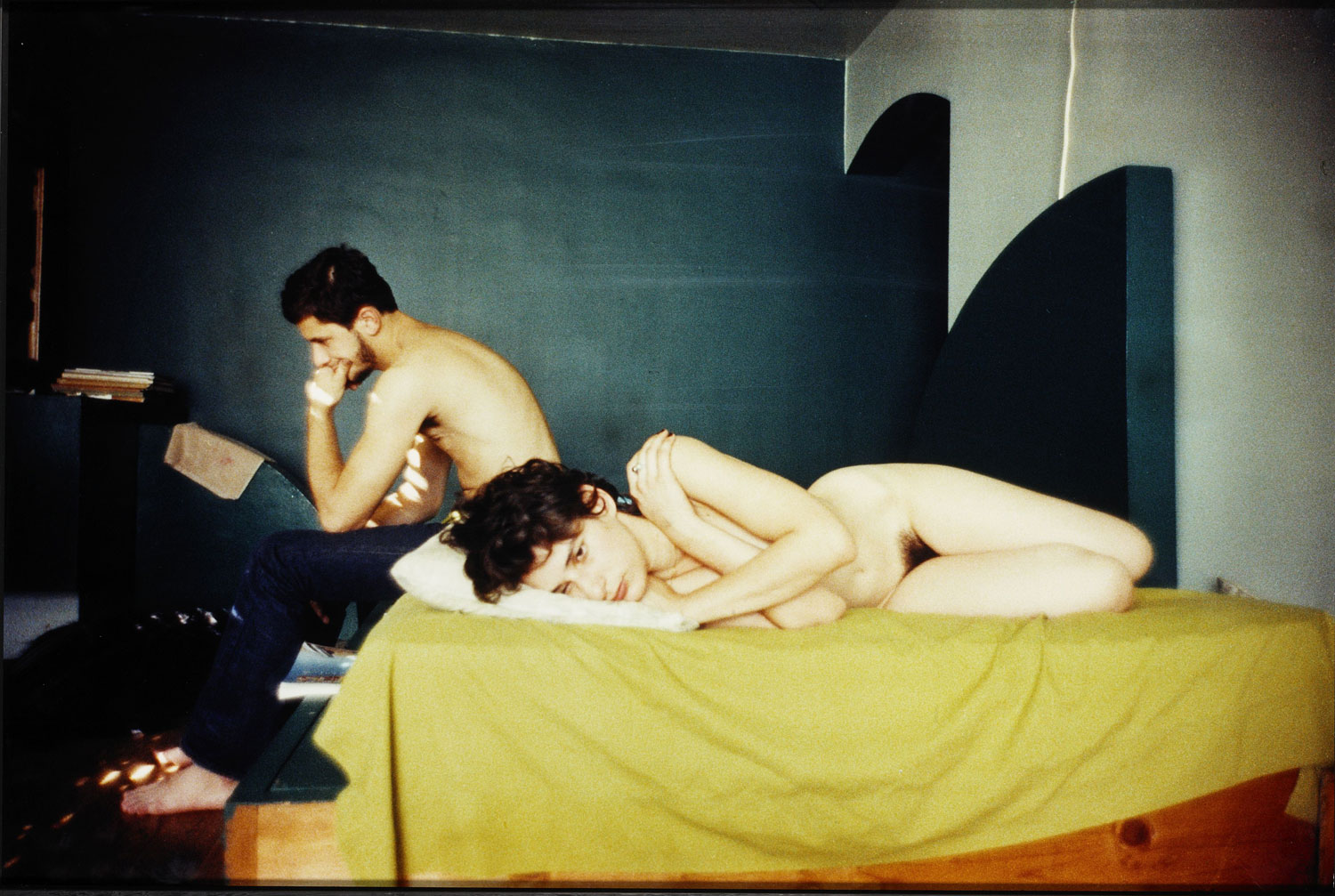 Nan Goldin, Couple in bed, Chicago, 1977. Färgfotografi typ R, Cibachrome © Nan Goldin
Nan Goldin, Couple in bed, Chicago, 1977. Färgfotografi typ R, Cibachrome © Nan Goldin
Kenneth Gustavsson
Born 1946, Sverige
Lives and works in Stockholm, Sweden
Kenneth Gustavsson lives in Stockholm. Between 1964 and 1967, he studied at Fotoskolan in Stockholm, where Christer Strömholm was the director.
Together with Anders Petersen, Gustavsson founded the photo agency Saftra. In 1984, he won Stora Fotografipriset, a prestigious award founded by the Swedish magazine Foto. In the 1980s, he participated in numerous exhibitions in galleries around the world, including New York, Houston and Prague. He is represented with a permanent embellishment at the Sundsvall Museum. In 1996, Kulturhuset in Stockholm featured the exhibition Indicier, where Gustavsson’s photography was shown together with works by Christer Strömholm and Anders Petersen.
Denise Grünstein
Born 1950, Finland
Lives and works in Stockholm, Sweden
Denise Grünstein’s oeuvre is characterised by romantic images of nature and people. For many years, she was primarily seen as a cultural celebrity photographer, but more recently she has developed a highly personal style reminiscent of Cindy Sherman, who also focuses on autobiographical works using roles to explore issues relating to sexuality, gender and identity. Grünstein has had several solo exhibitions including Figures in Landscapes at Moderna Museet (2001), Malplacé at Hasselblad Center in Gothenburg (2005) and Millesgården (2006).
Read more: Denise Grünstein: Figure in landscae (2001)
Charles Harbutt
Born 1939, USA
Lives and works in New York, USA
Paul Hill
Born 1941, United Kingdom
Lives and works in Derbyshire, UK
Paul Hill initially started as a freelance photo journalist and published his work in newspapers such as The Guardian and The Observer. Seemingly commonplace subject matter from Hill’s own surroundings become emblematic, abstract portraits and still-lifes in his pictures. His daughter Sam is a frequent subject. In 1990, he was awarded a grant from the Royal Photographic Society and he has written several books on photography, including White Peak, Dark Peak (1990). Today, Paul Hill is a professor of Photography at the De Montfort University.
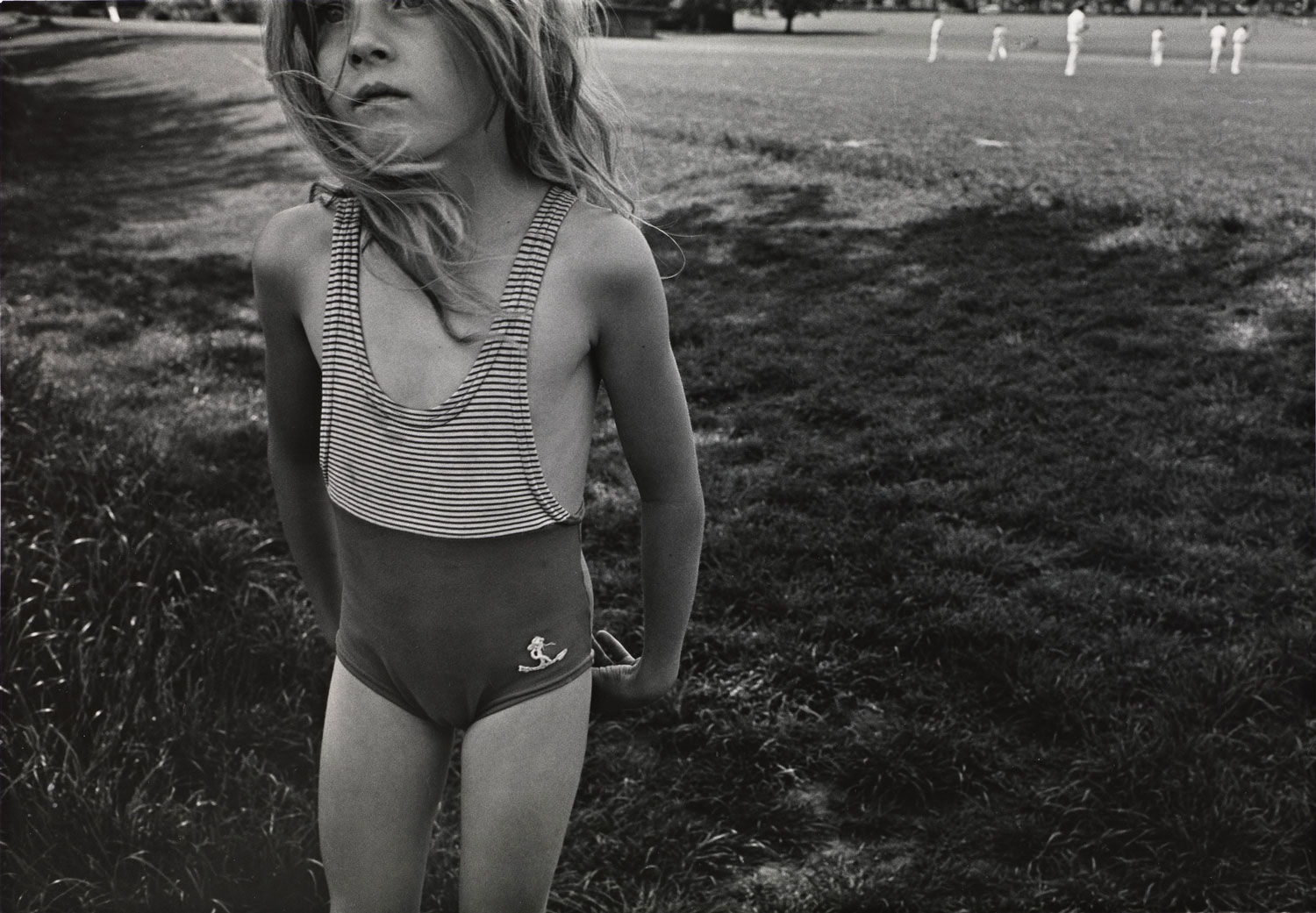 Paul Hill, Girl In Swimsuit and Cricketers, Ashbourne, 1977. Gelatinsilverfotografi © Paul Hill
Paul Hill, Girl In Swimsuit and Cricketers, Ashbourne, 1977. Gelatinsilverfotografi © Paul Hill
Walter Hirsch
Born 1935, Russia
Lives and works in Stockholm, Sweden
Walter Hirsch was born in 1935 in St Petersburg, Russia, but came to Sweden as a child. He lives and works in Stockholm.
He began his career in film but went on in 1965 to work as a freelance photographer in Stockholm. In 1967, his acclaimed series Midsummer was published, and in 1968, Moderna Museet showed his series London 13 April, 9 am – 11 pm, which includes nearly 700 photographs, all taken in one and the same day in the city.
Eiko Hosoe
Born 1933, Japan
Lives and works in Tokyo, Japan
Irina Ionesco
Born 1935, France
Lives and works in Paris, France
Irina Ionesco, born in Paris, was separated from her parents as a child and grew up with relatives in Romania.
As an adult, she returned to Paris and began painting and photographing. Many of Ionesco’s subjects are erotic renderings of women. The exhibition Eloge de Ma Fille, Ionesco’s breakthrough, was shown at the Nikon Gallery in Paris in 1974. Ionesco was harshly criticised for this tribute to her daughter, Eva, aged between 5 and 10, since the photographs were considered to be child pornography. Irina Ionesco has published some 20 photo books.
Graciela Iturbide
Born 1942, Mexico
Lives and works in Coyoacán, Mexico
Graciela Iturbide was born in Mexico City. Between 1969 and 1972, she studied film and later photography, at Universidad Nacional Autónoma de México, where she met Manuel Álvarez Bravo and eventually became his student.
Iturbide is perhaps best known for her series of photographs of the strong women in the Mexican village Juchitán, a project she embarked on in 1979. People, especially women, are her main subject, while the surroundings and situations are merely a setting. She has had a strong influence on later generations of photographers in Latin America and has won several awards for her work, including the Hasselblad Foundation’s international award for photography in 2008.
Jens S Jensen
Born 1946, Sweden
Lives and works in Gothenburg, Sweden
Jens S Jensen är född i Stockholm. Jensen är verksam som både fotograf och författare. Han är även utbildad arkitekt vid Chalmers tekniska högskola i Göteborg.
Jensen har publicerat flera böcker där han både skrivit och fotograferat. Flera av hans böcker har sin utgångspunkt i Göteborg: Hammarkullen (1974), Dom kallar oss bilbyggare – en berättelse om arbete och arbetare vid Volvo Torslandaverken i Göteborg (1978) och Ljuva drömmar – Hammarkullen åtta år senare (1982). Det är framför allt de återkommande skildringarna av förorten Hammarkullen som gjort Jensen känd. Arkitekturmuseet i Stockholm visade 1998 en utställning med samma titel som boken Tänk om allting vore underbart – Hammarkullen 20 år senare (1995).
Gerry Johansson
Born 1945, Sweden
Lives and works in Höganäs [SE]
Gerry Johansson was born in Varberg. In his teens, Johansson began to take an interest in photography, and began documenting urban environments during a sojourn in New York in the early 1960s.
He studied graphic design at Konstindustriskolan in Gothenburg between 1965 and 1969, after which he worked for fifteen years as a graphic designer. Since the mid-1980s, Johansson has been working as an independent photographer. He recently completed a trilogy of books portraying America (1998), Sweden (2005) and Germany (2007). His photographs depict places, landscapes and cities in finely-tuned, detailed images. Johansson works in a documentary tradition and is an exponent of classical black-and-white photography.
Harold Henry Jones
Born 1940, USA
Lives and works in Tucson, AZ, USA
Sune Jonsson
1930–2009, Sweden
Sune Jonsson started his photographic career in the early 1950s. In the early 1960s, he worked as a programme officer at Swedish Radio in Umeå, before getting a permanent position in 1968 as a field ethnologist at the Västerbotten County Museum, where he pursued a large number of photographic projects and later also made films.
His major breakthrough came with the photo book Byn med det blå huset (The Village with the Blue House) (1959), in which he chronicles his hometown Nyåker. Sune Jonsson published some 20 books, including Prag augusti 1968 (Prague August 1968), in the course of his long career and, unlike many photographers, was also a prolific author. His photos have won him several awards, including the Hasselblad Foundation’s international award for photography in 1993. Over the years, his work has come to be valued more for its artistic qualities, since his photos are always positioned somewhere in between reportage and art photography.
Kenneth Josephson
Born 1932, USA
Lives and works in Chicago, USA
Kenneth Josephson was born in 1932 in Detroit, USA. He lives and works in Chicago.
He began taking pictures at an early age with his family’s automatic camera and in 1960 was part of the first generation of photography graduates at the Illinois Institute of Design, where he studied under Harry Callahan. Josephson, who is perhaps best known for his series Images within Images, often takes the medium itself as his subject, and plays on reality and reproduction in an intelligent commentary on photography’s relationship to truth and illusion. In 1972, he was awarded a Guggenheim scholarship.
André Kertész
1894–1985, Hungary
William Klein
Born 1928, USA
Lives and works in Paris, France
Chris Killip
Born 1946, United Kingdom
Lives and works in Boston, MA, USA
Chris Killip moved to London in 1964 to work as a commercial photographer. After a few months, he switched to freelance work and moved back to the Isle of Man where he instead portrayed the traditional lifestyle of the inhabitants. In 1975, he moved again, this time to north-east England, where he embarked on a project to document communities and people in the dismantled industrialism in Thatcherite Britain. These photos were first compiled in 1988 in the book In Flagrante but he had to wait until 1989 for wider recognition, when he became the first to receive the Henri Cartier-Bresson Award.
Eva Klasson
Born 1947, Sweden
Lives and works in Brämhult, Sweden
Eva Klasson became internationally acknowledged in Paris in the mid-1970s on the strength of a series of intimate close-ups of her own body, which she compiled and published in an artist’s book in 1976 with the title Le troisième angle [The Third Angle].
Its title alludes to the three levels of conditions she sought to express in her images. The first was the physical condition, the second the mental/psychological and the third angle was that of the camera lens. In her projects, she is both behind and in front of the camera. Klasson had worked shortly at the Hasselblad camera factory when she moved to Paris in 1969 to work as a freelance photographer for architectural firms, advertising companies and various magazines. She created a further two series that explore various emotional states. Over a few years, she had numerous exhibitions in Paris, Rome, Geneva and Stockholm, before giving up photography and moving to the USA.
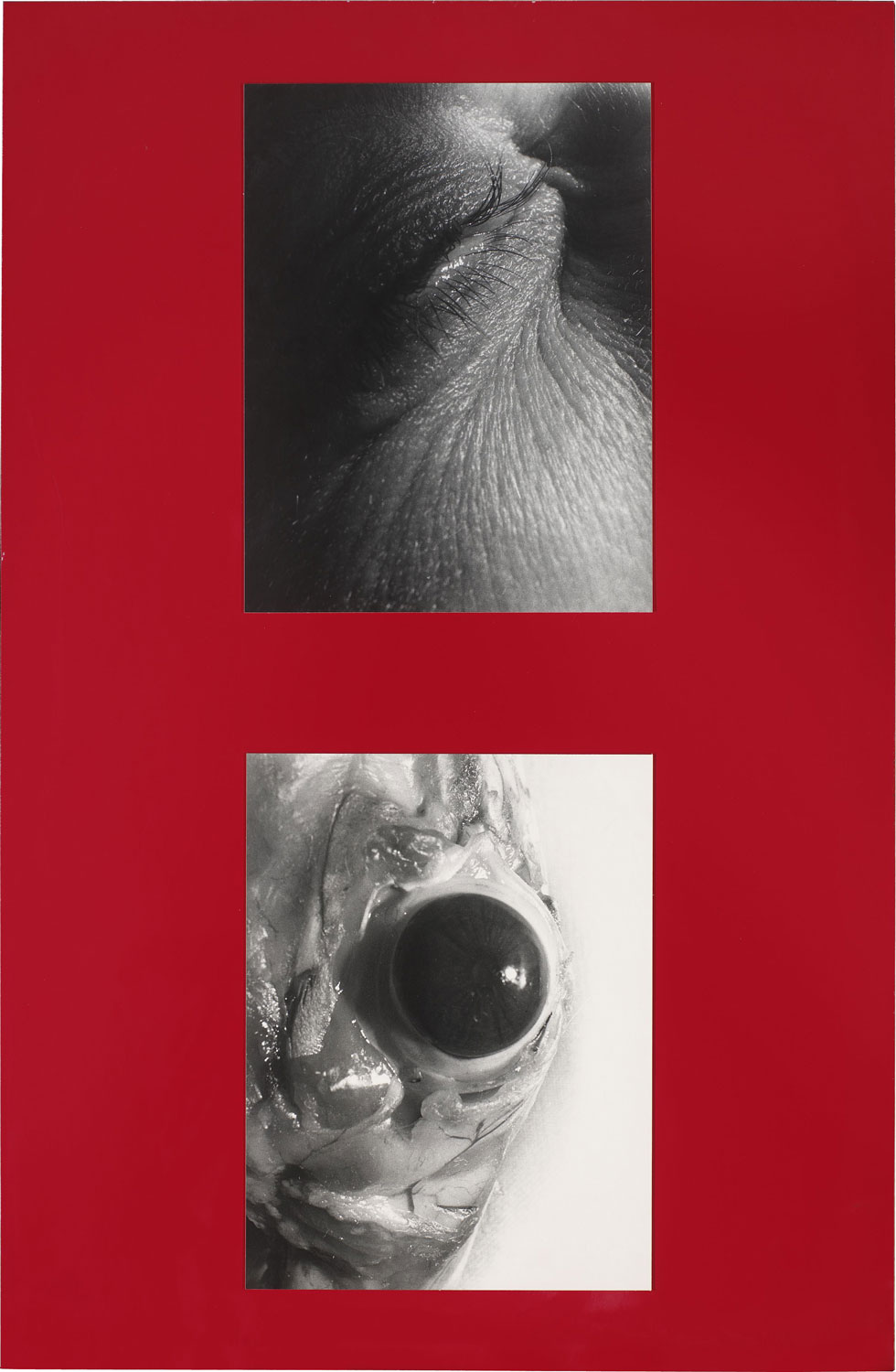 Eva Klasson, From the series Parasites, 1978 © Eva Klasson
Eva Klasson, From the series Parasites, 1978 © Eva Klasson
Josef Koudelka
Born 1938, Czechia
Lives and works in Paris, France
Victor Landweber
Born 1943, USA
Lives and works in Berkeley, CA, USA
Helen Levitt
1918–2009, USA
Lives and works in New York, USA
Helen Levitt began working in 1931 as an assistant to the portrait photographer Florian Mitchell in Bronx. She was deeply inspired by Walker Evans, Ben Shahn and Henri Cartier-Bresson, whom she met in New York in the mid 1930s. The writer and critic James Agee also had a strong influence on Levitt.
The magazine Fortune published her photographs for the first time in 1939, and four years later, the Museum of Modern Art featured Levitt’s first solo exhibition. In 1991, the San Francisco Museum of Modern Art had a major retrospective dedicated to Levitt, which then toured the USA. Helen Levitt is best known for her portrayals of New York street life, which focus especially on the poorer areas of the city and the everyday lives and games of children.
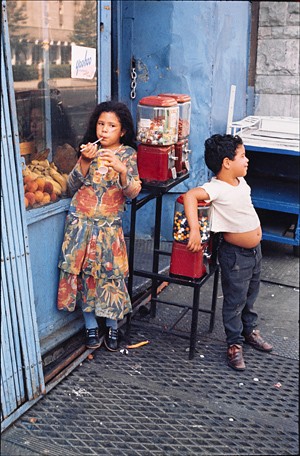 Helen Levitt, New York, 1971 © Helen Levitt. Material: Dye Transfer
Helen Levitt, New York, 1971 © Helen Levitt. Material: Dye Transfer
Leif Wigh on Helen Levitt
HELEN LEVITT (1918-2009)
Since the late-1930s, the cult photographer Helen Levitt, is admired by visual artists, film-makers and musicians from all over the world. She made her European debut in 1985 at Moderna Museet in Stockholm, where her show made a huge impact, which was further enhanced by the screening of her classic film In the Street.
Helen Levitt had been keenly interested in the visual arts from her early teens and she was employed at 18 by a portrait photographer in Bronx. After studying photography she became a member of the Pictorial Photographers of America. At the association’s gallery she encountered photographic art of a kind she had never seen before and was inspired to find her own personal style. She also came in touch with the Film and Photo League, an organisation whose socially critical stance suited her well.
After meeting Walker Evans and the French photographer Henri Cartier-Bresson in the late-1930s, her work underwent a fundamental change. She took to the streets of New York and inconspicuously portrayed life there. She carried her camera in a basket with a hole in the side for the camera lens. Meanwhile, she worked as a drawing teacher, which, in turn, made her interested in the games and activities of children. Graffiti on pavements and house walls also attracted her attention, and she travelled round the labyrinthine New York subway system, clandestinely photographing her fellow-passengers. She captured the faces of daydreamers and introverts, aggressive gestures, and expressions of sadness, passion and joy. She also inspired Walker Evans to take photos on the underground, leading to his famous book Many Are Called.
Helen Levitt was one of the first photographers whose pictures were labelled “street photography”. Her work dives deep into New York street life, describing the living conditions of children and grown ups. She explores areas that had rarely been shown in photographs before, and visualises children’s fantasies in which they assume other identities behind masks culled from the world of matinees and comics.
Text: Leif Wigh, curator photography at Moderna Museet 1977–2004.
Danny Lyon
Born 1942, USA
Lives and works in Ulster County, NY, USA
Ralph Eugene Meatyard
1925–1972, USA
Duane Michals
Born 1932, USA
Lives and works in New York, USA
He studied and worked as a graphic designer and did not become a photographer until the late 1950s. The Museum of Modern Art featured Michals in a solo exhibition in 1970. His photographs are often based on literature and a sequential narration not unlike the picture-boards used in film-making. He adds captions, but instead of building them on the subjects of the pictures, the hand-written lines are often contradictory statements. Double exposure and shadows suggest the presence of something outside the picture frame. Michal’s pictorial narratives reflect on existential themes such as death, sexuality and dreams.
Roger Minick
Born 1944, USA
Lives and works in Danville, CA, USA
Arno Raphael Minkkinen
Born 1945, USA
Lives and works in Boston, MA, USA
Michael Mitchell
Born 1943, Canada
Lives and works in Toronto, Canada
Barbara Morgan
1900–1992, USA
Björn Myrman
1942–1999, Sweden
Helmut Newton
1920–2004, Germany
Bill Owens
Born 1938, USA
Lives and works in Hayward, CA, USA
On leaving college, Bill Owens taught himself photography. After living abroad for some time, he returned to California, where he was employed as a photo journalist at the Livermore Independent. While many photographers went afield to portray society in urban settings, Owens instead focused on middle-class life in the idyllic suburbs. These photos were published in his debut book, Suburbia (1972), and the series was exhibited at the Museum of Modern Art and other art spaces. Often, the images appear to be a parody of life, but Owens’ relationship to this American dream is more complex.
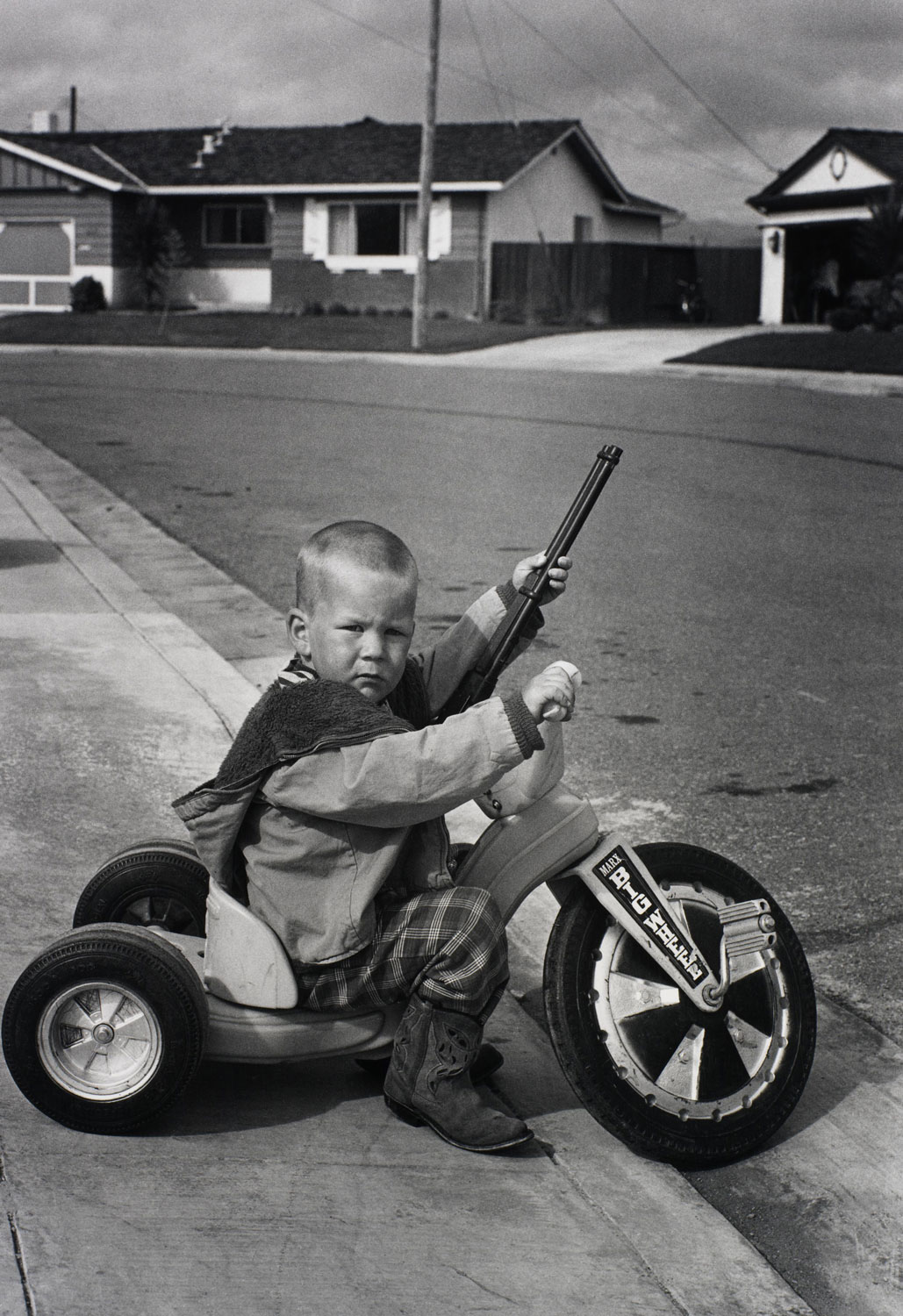 Bill Owens, Ur serien Suburbia, 1968–72 © Bill Owens
Bill Owens, Ur serien Suburbia, 1968–72 © Bill Owens
Tod Papageorge
Born 1940, USA
Lives and works in New Haven, CT, USA
Irving Penn
Born 1917, USA
Lives and works in New York, USA
In the early 1950s Irving Penn returned to New York after a spell in Paris. Portraying the new French fashions, he had astonished magazine editors with his idiosyncratic approach to fashion in general and haute couture in particular.
While his colleagues worked with elegant cars, palatial settings, and other clutter, Penn did away with all superfluous props. Only the essential elements remained: the person, the clothes, and the light that made the best of both. The background was a neutral grey or white; when grey, it sometimes consisted of an old tarpaulin, which only enhanced clothes and accessories. This unencumbered setting showed that the pictures were taken not in anything resembling reality but in a studio. Penn once said that he knew nothing about chandeliers or wallpaper.
Penn’s purist attitude pioneered a new approach to studio photography. He applied the same tactic to pictures of cultural celebrities, capturing the personalities of people like Truman Capote, Jean Cocteau, Anaïs Nin, Jasper Johns, and Carson McCullers. These images were not primarily portraits; instead, Penn found a whole world in each individual. The pictures he took in the specially constructed tent that he took on his trips to Africa and Asia are especially intriguing. The photographic collection Worlds in a Small Room was universally admired.
In the 1960s, working for Look magazine, Penn made a series of photographs describing American subcultures, including a memorable group on Hell’s Angels in San Francisco-one of the most unnerving photo sessions he ever did, he says. He has also photographed nudes, but unlike most other photographers he has chosen large, even obese models, producing different revelations of the shapes of the human body. In addition to taking insightful photographs, Penn has researched the history of photography and revived the platinotype, in which the paper is prepared with platinum or palladium salts instead of silver, heightening the middle range of the grey scale.
Penn’s photographs have been shown in two solo exhibitions at the Moderna Museet. Both exhibitions drew huge audiences, proving that his sophisticated and personal images appeal to a wide public. In connection with the most recent of these, Penn donated 100 photographs to the museum in memory of his Swedish-born wife, Lisa Fonssagrives-Penn. Among these images was the picture of Ingmar Bergman, a formidable portrait of the director’s world and personality.
Hasse Persson
Born 1942, Sweden
Lives and works in Borås, Sweden
After a few years as a photographer in the local rural press, Hasse Persson got a regular job at the newspaper Göteborgs-Posten and later moved on to the tabloid Expressen.
In 1967, Persson moved to the USA, where he became an established press photographer. His now classic photo book Amerikabilder (Pictures of America) was published in conjunction with an exhibition at Fotografiska Museet in Moderna Museet in 1974. The book features photographs from Persson’s travels and assignments and portrays many of the events and phenomena that characterised the American 1970s, including protests against the Vietnam War. As the curator at the Hasselblad Centre and Kulturhuset Stockholm, he has produced several major photo exhibitions in the 2000s, including an exhibition with the photographer Sally Mann in 2007. Persson is currently the director of Borås Konstmuseum.
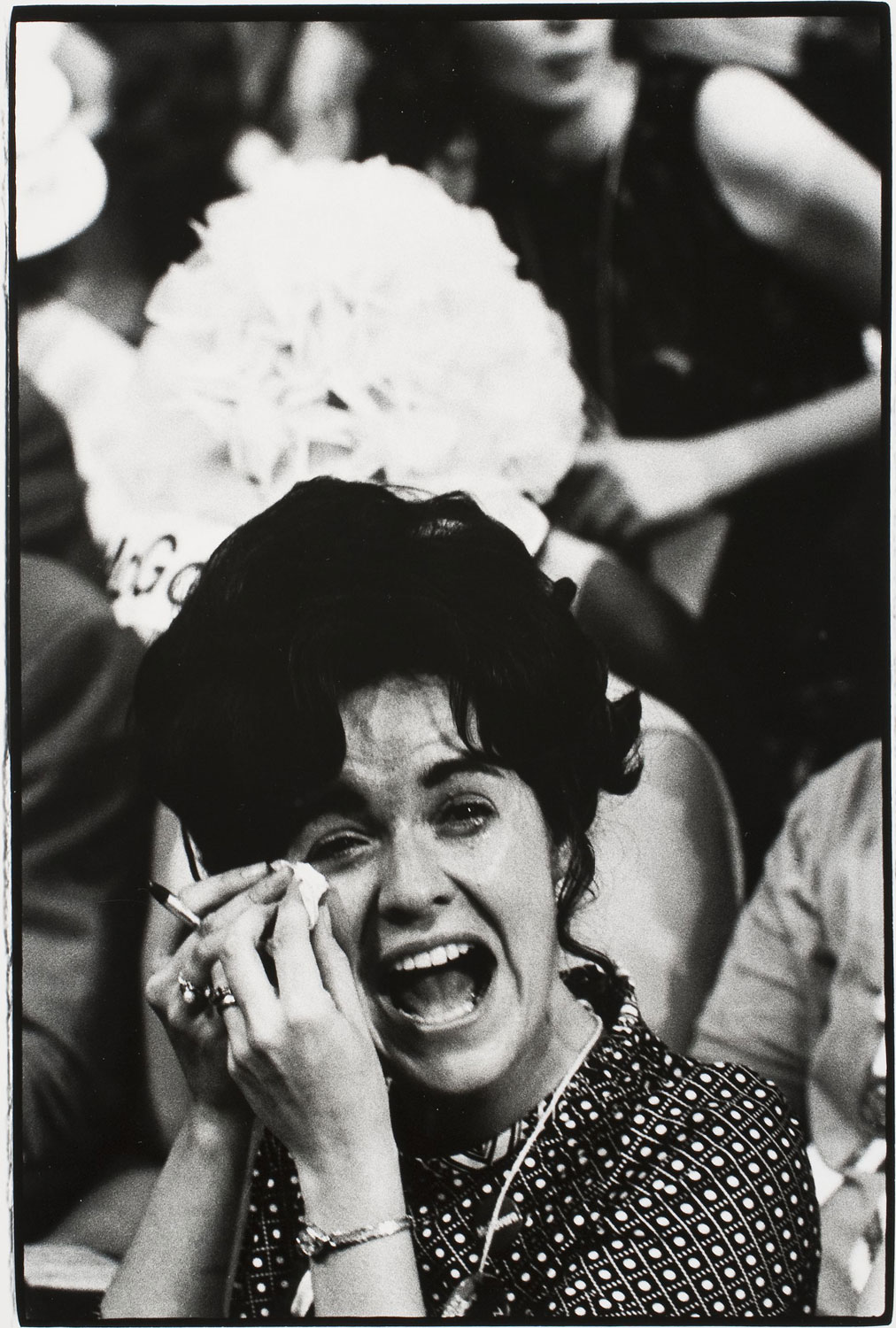 Hasse Persson, Glädjestrålande McGovern-delegat vid röstsammanräkningen som gjorde McGovern till Demokratiska partiets presidentkandidat. Ur serien “Amerikabilder”, 1972 © Hasse Persson
Hasse Persson, Glädjestrålande McGovern-delegat vid röstsammanräkningen som gjorde McGovern till Demokratiska partiets presidentkandidat. Ur serien “Amerikabilder”, 1972 © Hasse Persson
Anders Petersen
Born 1944, Sweden
Lives and works in Stockholm, Sweden
After studying under Christer Strömholm in 1966–68, Anders Petersen returned to Hamburg and the backstreets and murky bars near Reeperbahn where he had spent many a late night over many years, taking the photos that would eventually feature in his acclaimed debut and his first book, Café Lehmitz, published by Schirmer/Mosel in 1978.
In these intimate pictures he tenderly portrays the sailors, prostitutes and ragged nocturnal guests who frequented the bar. Since then, Petersen has continued to produce series of photographs of close encounters with social outcasts as a recurrent theme. Today, Petersen is an internationally recognised photographer with a strong influence on younger generations of Nordic photographers.
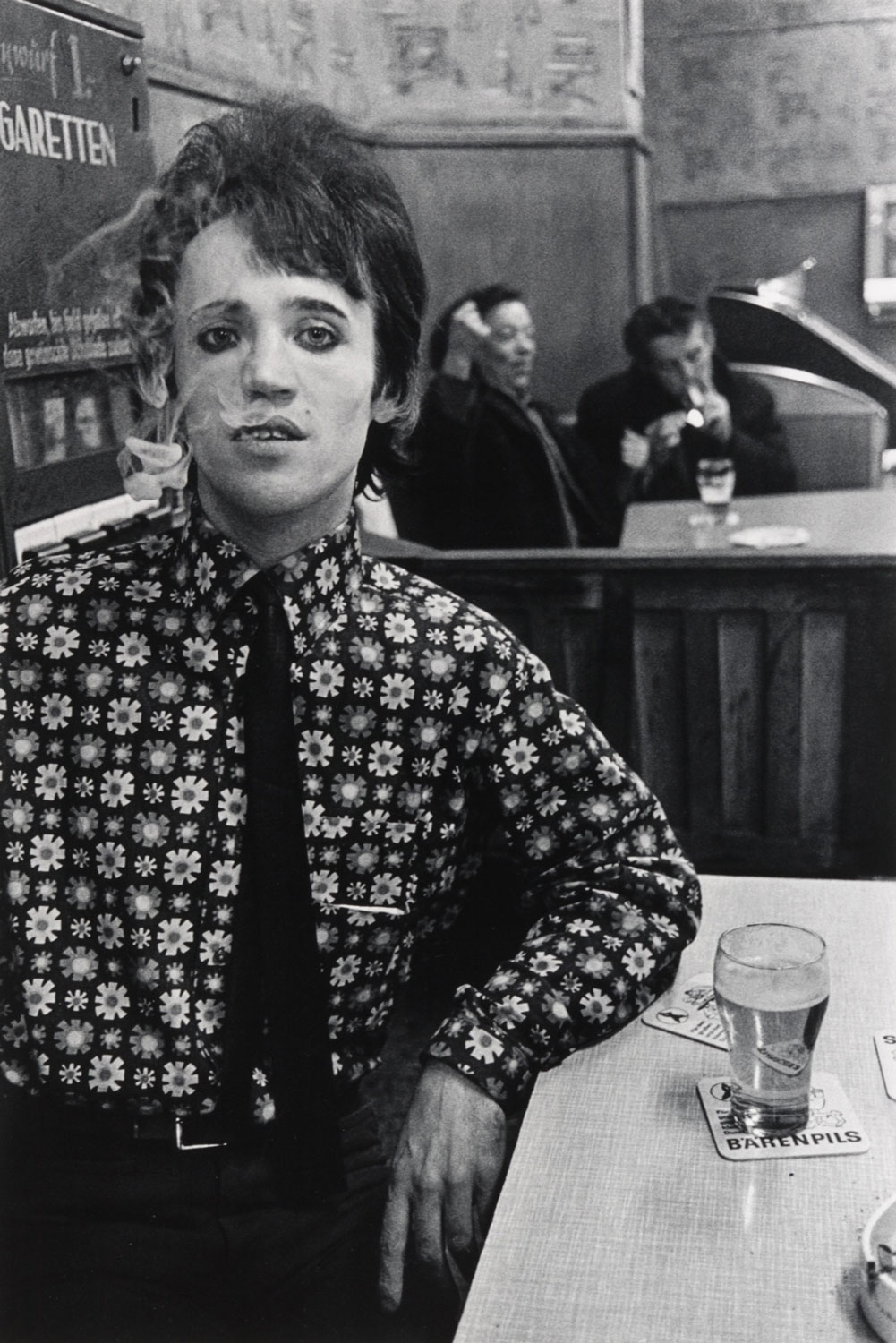 Anders Petersen , Ramona. Ur serien Café Lehmitz, 1967–1970/1986 © Anders Petersen
Anders Petersen , Ramona. Ur serien Café Lehmitz, 1967–1970/1986 © Anders Petersen
Håkan Pieniowski
Born 1948, Sweden
Lives and works in Stockholm, Sweden
Romualdas Rakauskas
Born 1941, Lithuania
Lives and works in Vilnius, Lithuania
Birgitta Ralston
Born 1933, Sweden
Lives and works in Cambridge, MA, USA
Birgitta Ralston worked as a model in the 1950s and 60s. While working for the Eileen Ford Agency, Dorian Lee and Jo Somers, she modelled for Richard Avedon, Henry Clark, Martin Munkacsi, Erwin Blumenfeldt and other renowned photographers. Inspired by their work, she started taking photographs herself.
In the early 1970s, she studied photography at the Massachusetts Institute of Technology under Minor White, who introduced her to Eastern mysticism, Zen Buddhism, American mysticism and the theory of the photographic zone system as described by Ansel Adams in his textbooks on photography. In the collection Masker (Masks, 1974–77) Ralston describes in images the transition she underwent when she decided to take photographs instead of being photographed.
Lilo Raymond
Born 1922, Germany
Lives and works in New York, USA
Lilo Raymond was born in Frankfurt, but her family fled to the USA in 1938 to avoid persecution in Germany. She lives and works in New York.
Raymond was attracted at an early age to the lively art scene around Greenwich Village, New York, where she worked for many years as an artist’s model. Her interest in photography did not awaken until the 1950s, when she studied under the photographer David Vestal. Raymond kept her commercial photography and her artistic projects apart. The latter are often based on still-life motifs and simple everyday objects that are portrayed in strong lighting that gives the images a veritably sculptural quality. An extensive book on her photography, Revealing Light, was published in 1989.
Milton Rogovin
Born 1909, USA
Lives and works in Buffalo, USA
In 1931, Milton Rogovin graduated from Columbia University, where he had studied optometry. A few years later, he moved to Buffalo, where he also bought his first camera.
In 1952, he was brought before the House of Un-American Activities Committee for his political commitment. The subsequent harassment forced Rogovin to close his practice, and in 1958 he decided to devote himself to a photographic record of the social injustices around him. The series Lower West Side from 1972-2001, for which he won general recognition, portrays everyday working-class life in the slums of Buffalo and is a valuable historical document, covering more than 30 years in the lives of the Puerto Rican and African-American population.
Tom Sandberg
Born 1953, Norway
Lives and works in Oslo, Norway, and Paris, France
Melissa Shook
Born 1939, USA
Lives and works in Chelsea, MA, USA
Melissa Shook studied photography at Bards College and took an early interest in her own body and identity, exploring these themes in a series of diary photographs.
Her self-portraits and extensive series of pictures of her daughter Krissy from 1972–73, which were not originally intended for the public, eventually made it into the photo magazine Camera 35 Annual. This led to her breakthrough and meant she could earn her living as a photographer and teacher.
Her daily documentation of life in the New York slums was Shook’s way of coping with existence, the loss of her mother and memories of her. Her photographs were shown in the exhibition Tusen och en bild (Thousand and One Image) (1978) and subsequently in the exhibition Se dig om i glädje (Look Back in Joy) (1981), both at Fotografiska Museet in Moderna Museet.
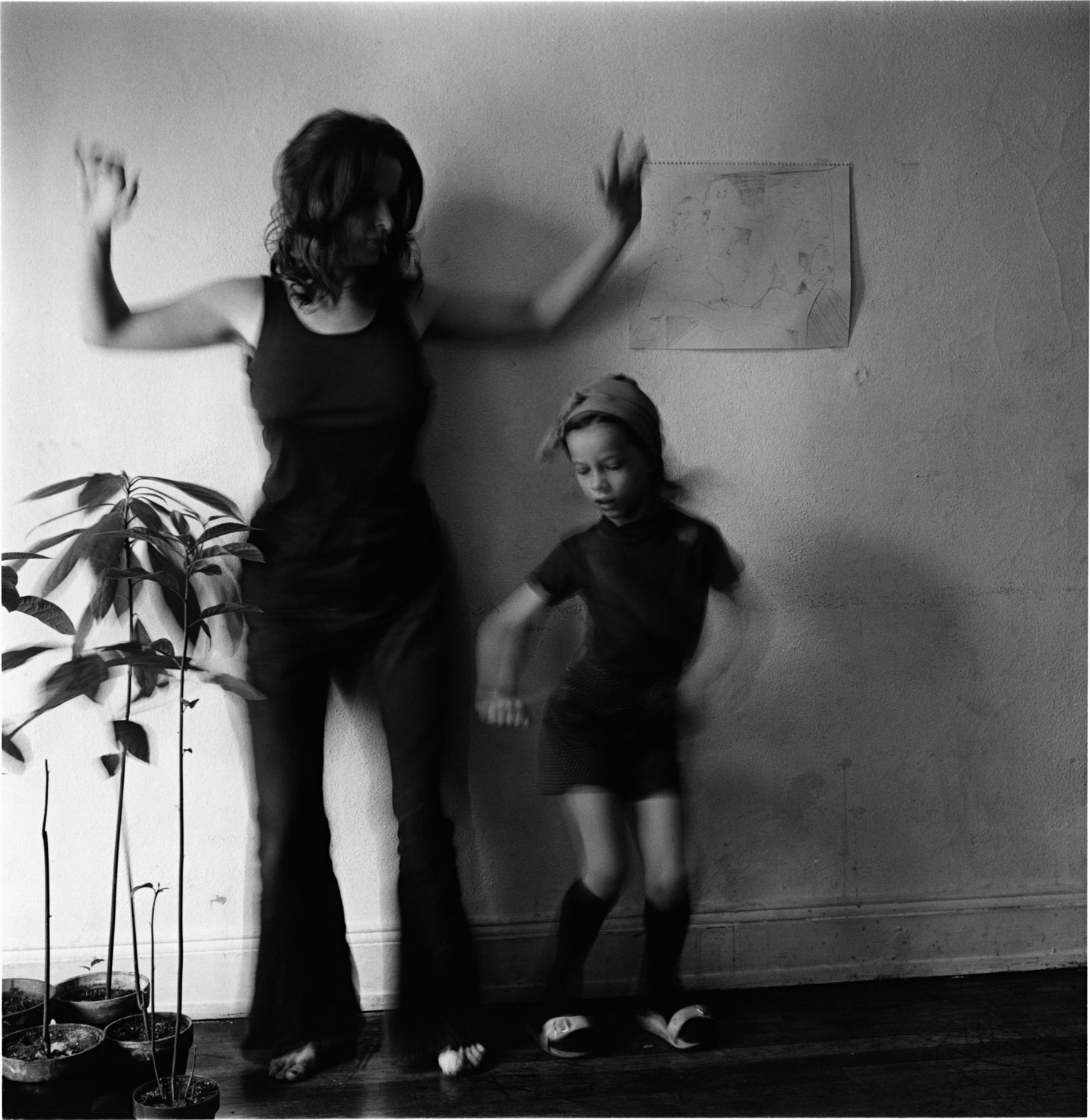 Melissa Shook, May 30, 1973 © Melissa Shook
Melissa Shook, May 30, 1973 © Melissa Shook
Ulf Sjöstedt
1935–2009, Sweden
Lives and works in Gothenburg, Sweden
Neal Slavin
Born 1941, USA
Lives and works in New York, USA
Gunnar Smoliansky
Born 1933, Sweden
Lives and works in Stockholm, Sweden
Gunnar Smoliansky, i Visby, är utbildad vid Fotoskolan i Stockholm, under ledning av Christer Strömholm. I början av sin karriär arbetade Smoliansky som industrifotograf. Han har gjort sig känd som en mycket skicklig skildrare av stämningar samt som uttolkare av Stockholm, speciellt av stadsdelen Södermalm, där hans bilder fångar spåren av stadens invånare. I detta arbete koncentrerar han sig på de till synes små händelserna och detaljerna i det stora sammanhang som staden utgör. Han var den första personen som erhöll Stockholm stads nyinstiftade fotografipris 2005 till minne av Lennart af Petersens. Smoliansky har medverkat i en rad utställningar och böcker – senast 2008 hade han en stor separatutställning på Kulturhuset i Stockholm med titeln En bild i taget.
Otto Steinert
1915–1978, Germany
Otto Steinert was a qualified MD, and an autodidactic photographer. Steinert was one of the founders of Fotoform, a group of photographers who represented what came to be called subjective photography. Instead of exploring physical reality, the subjective movement focused on the complex emotional states of the individual.
In the 1940s and 50s, he taught photography at the crafts school in Saarbrücken, of which he later became the principal and professor. Steinert rediscovered and developed the photographic heritage of Moholy-Nagy and the Bauhaus school, and his entire oeuvre was based on the Bauhaus ideals. He organised three major photo exhibitions under the name of Subjektive Fotografie (1951, 1954 and 1958) presenting all kinds of personal, creative photography. Steinert’s photographs are often montages incorporating dark silhouettes that appear to hover in the picture. He went on to teach at the University of Essen and compiled one of Europe’s finest collections of photography at the Museum Folkwang in Essen in the 1960s and 70s.
Joel Sternfeld
Born 1944, USA
Lives and works in New York, USA
Paul Strand
1890–1976, USA
Christer Strömholm
1918–2002, Sweden
Christer Strömholm is one of the major celebrities of Swedish photography. He was born in Stockholm and converted from graphic art to photography in the late-1940s. He was deeply influenced by the German group Fotoform, which advocated and practised a creative, intimate style of photography. Strömholm’s photographs from the early-1950s are stark black-and-white compositions of wall surfaces, shadows and stylised environments.
Later, when he lived in Paris intermittently in the 1950s and ’60s, he developed a street-photography style, and it was during this period that he took his familiar portraits of transsexuals in Place Blanche. In the mid-1950s, Strömholm began teaching photography at Kursverksamheten in Stockholm, an activity that expanded into the famous Fotoskolan from which some 1,200 students graduated between 1962 and 1974. His images and approach have been an inspiration to generations of Swedish photographers, but his own breakthrough did not really come until 1986, with the show ”9 Seconds of My Life” at Moderna Museet.
”It is the art of SEEING that is the starting point for all creativity, and then, of course, every profession is subject to its specific mathematics and material conditions” Christer Strömholm, from ”Opinions about the modern photography”, Subjektive Fotografie. Intenational Exhibition of Modern Photography Organised by the Photoraphic Section of the Schule für Kunst und Handwerk, Saarbrücken, 1951, 43.
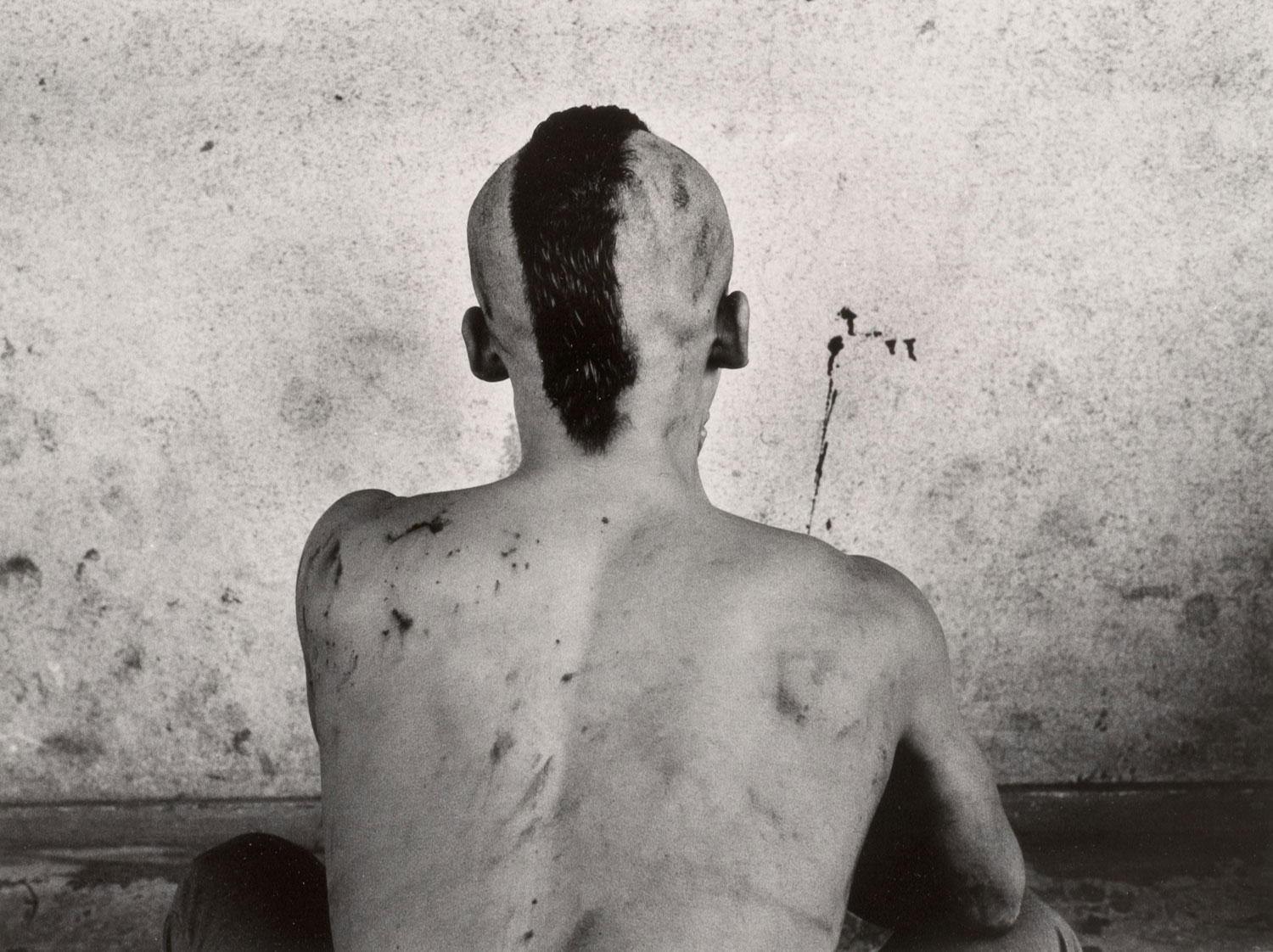 Christer Strömholm, Shinohara, ca 1961 © Christer Strömholm
Christer Strömholm, Shinohara, ca 1961 © Christer Strömholm
CHRISTER STRÖMHOLM BIOGRAPHY
1918
Christer Strömholm was born in Stockholm on 22 July. His father, Fredrik Strömholm, was an army officer, and the family moved between different regiments in Sweden, including Eksjö, Lidingö, Boden and Stockholm. His mother, Lizzie, was from Gothenburg.
1934
His father committed suicide.
1935
Graduated from Enskilda gymnasiet on Nybrogatan in Stockholm, which he attended after leaving Nya Elementar school at Hötorget. In the summer went to Morungen in Germany as an exchange student, to study German.
1936-39
Volunteered in the Spanish Civil War and undertook two assignments as a courier.
1937
Went to Dresden, where he studied art under Professor Waldemar Winkler, but soon left Germany for Prague, before going on to Paris, where he met the Swedish artist Dick Beer who became his mentor. They travelled together in southern France and Christer Strömholm was instructed in art history and artistic techniques. Also studied painting at Académie André Lhote in Paris.
1938
Returned to Sweden and studied painting under Otte Sköld and Isaac Grünewald in Stockholm. Studied art in Florence and Rome.
1939
Went to Monte Carlo, Marseille, Paris and Tunis, but returned to Sweden when the Second World War broke out. Did his military service at the Göta Life Guards armoured company in Stockholm.
1940
Fought for anti-tank units as a volunteer in the Finnish Winter War on the Salla front.
1940-45
Joined the Norwegian resistance against the German occupation. Formed a voluntary ranger corps, “Grupp Conny” together with Conny Andersson, a friend from the anti-tank units in Finland.
1942
Served in the Norwegian resistance as a courier based in Stockholm until 1945.
1944-45
Married to Ellen Bergman (née Lundström).
1945 Decorated with the Norwegian War Medal at a ceremony at the Norwegian Embassy in Stockholm.
1946-51
Married to Dagny Lamm (née Andersson).
1946-56
Settled in Paris and enrolled at the Académie des Beaux-Arts, where he produced a series of artist portraits, among other works. Also studied in Italy at the academies in Florence and Faenza. Assumed the artist pseudonym Christer Christian.
1946-48
Travelled to the Atlas mountains and Carthage in North Africa, on behalf of the Ethnographic Museum in Stockholm.
1947
Attended the school of painting on rue de la Grande Chaumière in Paris during the winter semester. Joakim Strömholm, Christer Strömholm’s and Dagny Lamm’s son, was born. He started photographing in his teens and is now a professional photographer.
1948
Pursued his art studies at Académie Libre in Paris and later the same year under Professor Lennart Rodhe in Stockholm.
1949-54
Became a member of the German group Fotoform, led by Dr. Otto Steinert in Saarbrücken, Germany. Participated in exhibitions in Europe and the USA with other members of Fotoform. Developed an interest in photography, via graphic art, towards the end of the 1940s.
1951-54
Married to Inga Dyrssen-Ayers (née Svedberg)
1955
Studied oil painting and graphic art under Professor Ottone Rosai at the Academy of Art in Florence.
1956
Filmed the documentary Ansikten i skugga (Faces in Shadow) with Peter Weiss. The film was about the regulars of the old beer houses in Old Town, Stockholm. Christer Strömholm did the photography and captured the guests with a hidden 16 mm camera. Took over teaching photography at an evening school at Kursverksamheten, an adult education institute run by Stockholm University. The class, which was initially intended as a course in photographic design, developed under Christer Strömholm and Tor-Ivan Odulf into a three-year vocational training course.
1956-64
Portrayed the transsexuals in the Place Blanche neighbourhood in Paris.
1957-68
Married to Anna-Clara Krusenberg, who was an air stewardess at SAS and could occasionally bring her husband along on trips around the world for a modest fare.
1958
Worked as a coach tour guide for Scandinavian Touring until 1961. Guided tourists on trips from Malmö, via Paris, to Madrid, Valencia, Barcelona and back. During this time he photographed extensively. Started working more seriously as a photographer and went on several photographic journeys over the subsequent years.
1959
Jakob Strömholm, Christer and Anna-Clara Strömholm’s son, was born. He is currently an architect. Travelled to Palma de Mallorca, Spain.
1961
Visited Tokyo.
1962-1972
Was the director of Fotoskolan in Stockholm. The focus of the curriculum was on reportage photography and documentary film. Fotoskolan, which continued to operate two years after Strömholm resigned, graduated 1,228 professional photographers and film-makers from 1962 to 1974.
1963
Went to Hiroshima in Japan, to Calcutta in India, Nairobi in Kenya and Los Angeles, USA.
1965
Visited New York. The exhibition Till minnet av mig själv (In Memory of Myself) was shown at Galerie Observatorium, Stockholm.
1966
Was awarded the Agfa-Gevaert work grant. The exhibition Dödsbilder (Pictures of Death) was shown at Galerie Observatorium.
1967
Published Poste Restante, which was selected by an international jury in 2004 as one of the world’s 175 best photographic books.
1968-78
Lived with the artist Angelica Julner.
1970-78
Returned again to Paris when Fotoskolan closed, and settled there. Divided his time between Paris and his house, a former ruin, in Fox-Amphoux, Provence.
1976-77
Worked on a series of large-format colour polaroid pictures.
1978
The exhibition Privata bilder (Private Pictures) opened at Galleri Camera Obscura in Stockholm’s Old Town. This was the first retrospective show of his work. Met the actress Ingalill Rydberg, with whom he lived until his death, first as her partner for nine years, and then as a neighbour and close friend.
1979
Awarded the “Great Photography Prize” by FOTO magazine, in the category subjective photography.
1981
Had a stroke, from which he recovered gradually.
1982
Awarded a guaranteed income for visual artists by the government. The exhibition Privata bilder II (Private Pictures II), a sequel to the successful first exhibition on that theme, opened at Galleri Camera Obscura.
1986
The retrospective 9 sekunder av mitt liv, fotografier 1939-86 (9 Seconds of My Life, Photography 1939-86) opened at Moderna Museet, Stockholm. Some 40,000 people saw the exhibition.
1993
The government appointed him to a professorship in Photography.
1993-1997
Worked on the book Kloka ord (Wise Words), a collection of aphorisms and work notes.
1998
Winner of the 1997 International Hasselblad Award. The exhibition Christer Strömholm. 1997 Hasselblad Award Winner opened at Hasselblad Center, Gothenburg.
2002
Christer Strömholm died on 11 January. The exhibition Christer Strömholm 1918-2002. On verra bien opened at Färgfabriken in Stockholm, before touring Sweden, Germany and France.
Josef Sudek
1896–1976, Czechia
Antanas Sutkus
Born 1938, Lithuania
Lives and works in Vilnius, Lithuania
Antanas Sutkus studied journalism at Vilnius University in 1958–1963. He was one of the founders of the Photography Art Society of Lithuania, which has been crucial in promoting Lithuanian photographers to national and international audiences. Sutkus’ most important works include the series People of Lithuania, an ongoing project that he started in 1976, documenting the continually changing life in Lithuania. People of Lithuania has frequently been compared to the humanistic photography represented by Henri Cartier-Bresson and Andre Kertesz. Antanas Sutkus has worked as a freelance photographer in Vilnius since 1969.
Otmar Thormann
Born 1944, Austria
Lives and works in Stockholm, Sweden
Otmar Thorman föddes i Graz, Österrike. Han flyttade till Sverige 1965 och har sedan dess varit verksam i Stockholm. I Thormans fotografi gör sig ofta minnena av hans uppväxt i efterkrigstidens Österrike gällande. Thormann tycks vara inspirerad av katolskt kyrkomåleri men även av den modernistiska bildkonst som uppstod i mellankrigstidens Tjeckoslovakien – i synnerhet förknippas Thormanns fotografier med Josef Sudeks bildestetik. Thormann har bland annat haft soloutställningar på Moderna Museet (2002), Malmö konsthall (1987) och Centre Pompidou i Paris (1984).
Arthur Tress
Born 1940, USA
Lives and works in Cambria, CA, USA
After graduating in art from Bards College in 1962, Arthur Tress moved to Paris for a period. This was followed by extensive travels, which often took him to distant places and cultures that were to have a strong impact on his oeuvre. Tress’ photographs are based on the surrealist tradition that was embraced by many photographers in the 1960s. He became a master at constructing imaginative images where objects are portrayed in theatrical settings with mysterious allusions.
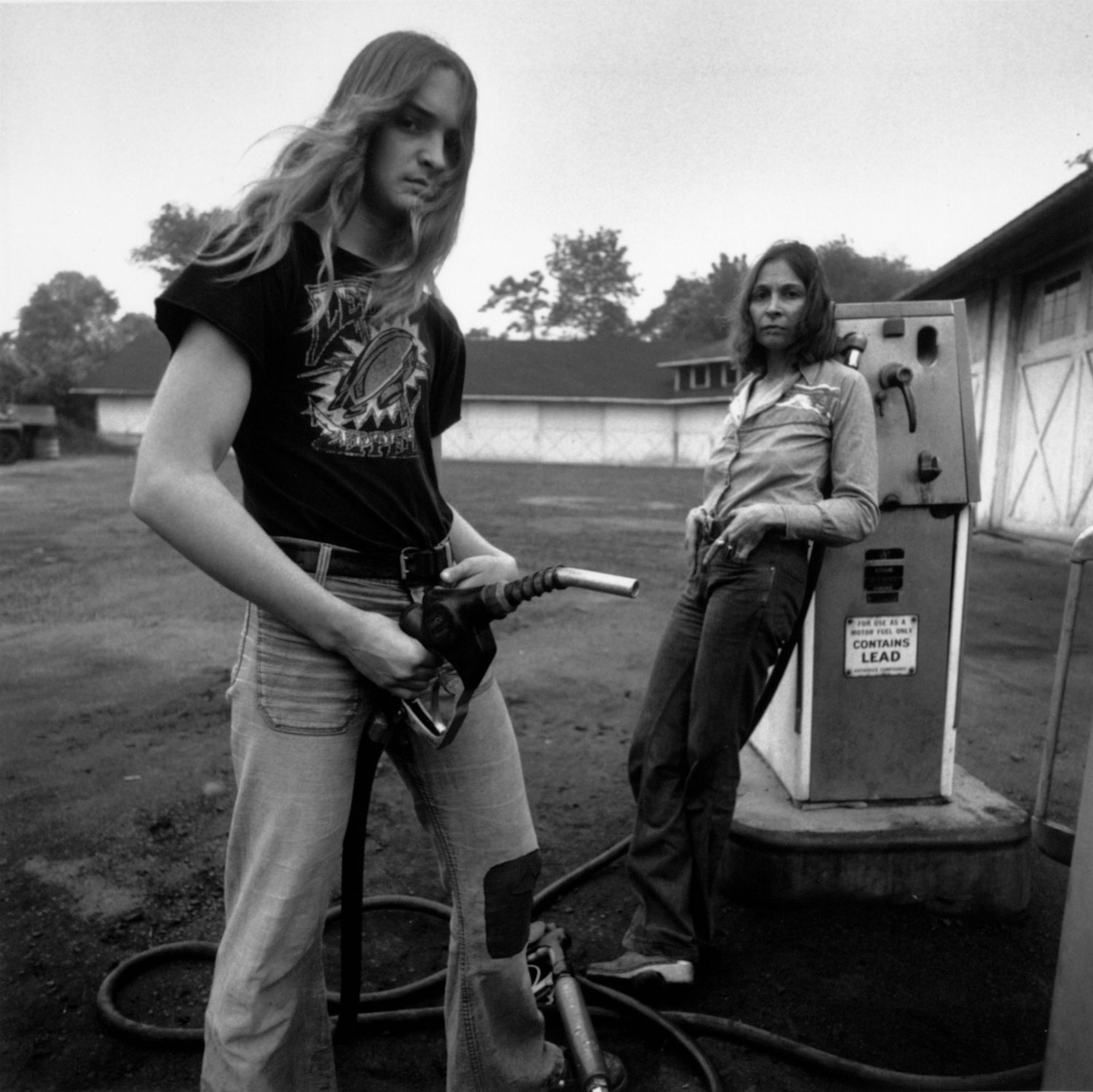 Athur Tress, Mother and son, Princeton, 1967 © Arthur Tress
Athur Tress, Mother and son, Princeton, 1967 © Arthur Tress
Jerry Uelsmann
Born 1934, USA
Lives and works Gainesville, FL, USA
Odd Uhrbom
Born 1941, Sverige
Lives and works in Uppsala, Sweden
Odd Uhrbom studied at Christer Strömholm’s Fotoskolan in Stockholm. He made his breakthrough with the book Gruva (Mine), (1968), which he published together with the author Sara Lidman. This book portrays the conditions for miners at the LKAB mines in Kiruna and Malmberget in northern Sweden. It was a phenomenal success and is considered to be a triggering factor behind the great miners’ strike in Sweden in 1969 that resulted in higher wages and better working conditions for the miners. Uhrbom is known internationally for his empathetic photo journalism from warzones, showing the plight of the civilian population and their fight for survival, for instance in Afghanistan and Jordan.
Burk Uzzle
Born 1938, USA
Lives and works Wilson, NC, USA
Andy Warhol
1928–1987, USA
Andy Warhol signed and donated a photo album to Moderna Museet in 1968, in connection with his first solo exhibition, curated by Pontus Hultén. Seven posters, which are now classics, were also produced for the exhibition, featuring quotes by Warhol.
The album consists of two volumes containing several hundred black-and-white photos from Andy Warhol’s life in the second half of the 1960s. The people in the pictures include Ingrid Superstar, Viva, Gerard Malanga, International Velvet, Nico, Ondine, Taylor Mead, Edie Sedgwick, Billy Name, Valerie Solanas and Henry Geldzahler. The two volumes can be divided into three sections. The first documents Andy Warhol’s output, photographed by Rudolph Burckhardt, Eric Pollitzer and John D. Schiff. The other two sections consist of pictures by the photographers Billy Names and Stephen Shores from the making of the films and life at The Factory.
Henry Wessel J:r
Born 1942, USA
Lives and works Richmond, CA, USA
Edward Weston
1886-1958, USA
Robert Alan Widdicombe
Born 1949, Ft. Wayne, IN, USA
Lives and works in Pena Blanca, NM, USA
Christian Vogt
Born 1946, Switzerland
ives and works in Basel, Switzerland
Rein Välme
Born 1936, Estonia
Lives and works in Stockholm, Sweden

